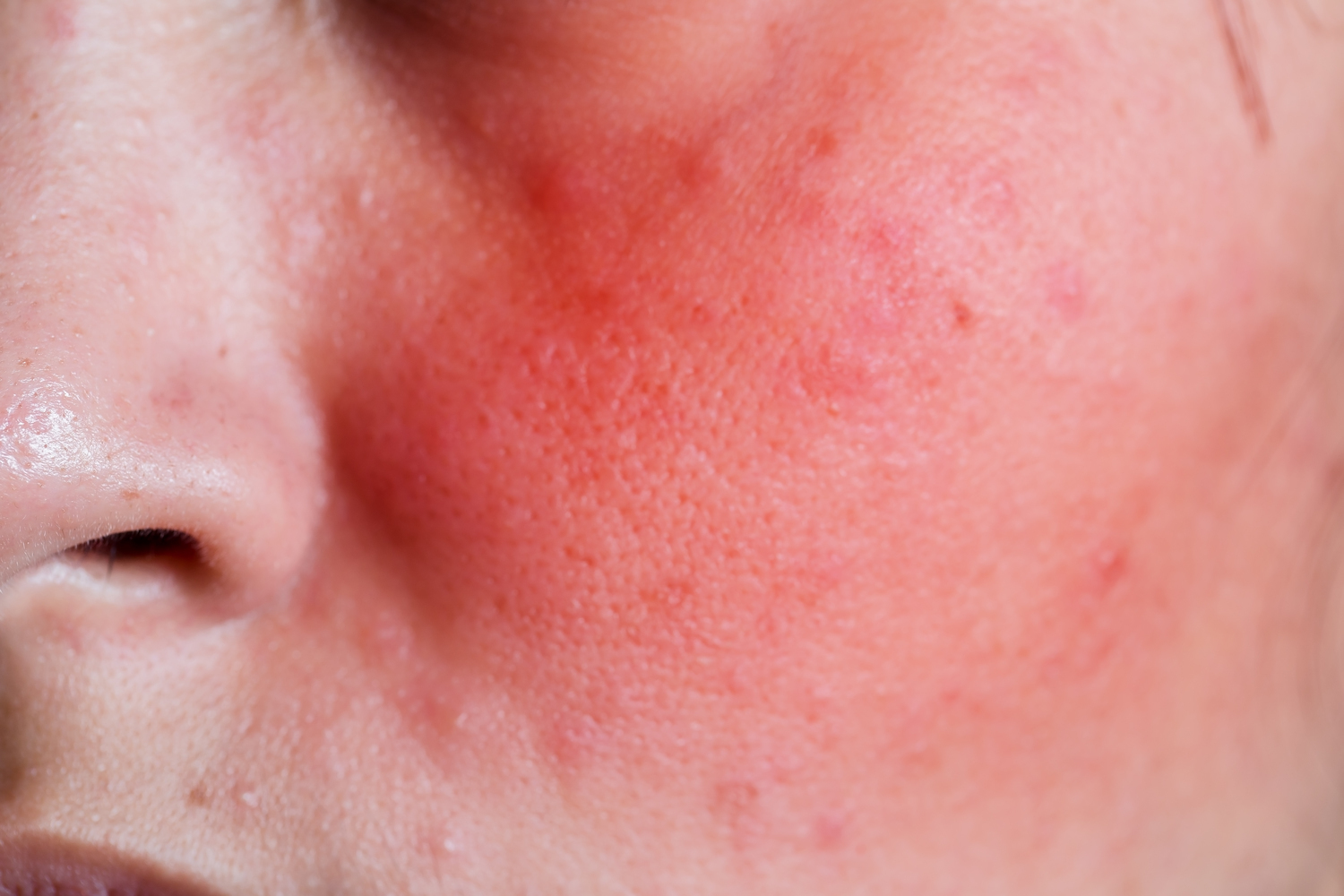
6 Early Signs of Lupus
Lupus is an autoimmune disorder. It occurs when the body’s immune system mistakes healthy tissues for foreign invaders such as bacteria, viruses, or other germs, which causes the immune system to attack and damage those healthy cells and tissues leading to inflammation and damage. Lupus is a serious health condition that affects an estimated 5 million people worldwide. In the United States, approximately 1.5 million individuals have been diagnosed with lupus and the disease disproportionately affects women between the ages of 15-44. These are the common signs of lupus:
1. Butterfly-shaped rash on the face
The rash presents as a red swelling on the cheeks, nose, and chin and can cause skin discoloration. While this is not always indicative of lupus, combined with other symptoms, it can be an indication of underlying organ involvement which should be further investigated by a medical professional. If suspected, laboratory tests such as a blood count or protein electrophoresis should be carried out to determine if there are signs of inflammation. Early diagnosis and treatment may help to prevent long-term damage caused by this condition
2. Fingers and toes that turn white or blue
This finger and toe discoloration happens due to poor blood circulation in the extremities. This symptom is referred to as Raynaud’s phenomenon. It occurs when the narrowing of the small arteries limits oxygen flow, changing the color and temperature of the skin. Skin changes can range from bright red to white or blue with a cold temperature.
3. Chest pain and shortness of breath
A combination of chest pain, pleurisy (which is sharp chest pain resulting from inflammation in the lungs or rib area), and shortness of breath can indicate a flare-up related to lupus. Specifically, these symptoms can be caused by a condition called pericarditis, which occurs when inflammation spreads to the outer layer of tissue surrounding the heart and causes fluid buildup near the lungs. Additionally, pleurisy complications such as pulmonary embolism or pleurisy/lung abscesses may cause chest pain and shortness of breath. It is vital for individuals to promptly seek early medical attention.
4. Hair thinning and hair loss
Hair loss can occur when lupus antibodies attack healthy tissue in the scalp, causing inflammation that results in brittle, easily-broken hairs. The accumulation of chemicals and medications used to treat other symptoms of lupus are also known to contribute to hair thinning and loss. Certain lifestyle changes may help minimize or prevent hair thinning or loss due to lupus. These include getting sufficient rest each night, reducing stress levels, and limiting sun exposure. Finally, some medications prescribed by doctors for specific types of lupus may be beneficial for treating hair thinning associated with this condition.
5. Joint pain and swelling
Joint pain causes tenderness, sharp pains, and a stiffness ranging from mild to severe and may last for months during a lupus flare up. Swelling typically affects the hands and feet, resulting in redness, itching, tingling sensation, and limited movement. Individuals with suspected lupus need to seek prompt medical attention as treatments available can help manage the symptoms, and prevent contributing mobility issues.
6. Light sensitivity
Light sensitivity can cause significant skin irritation after exposure to ultraviolet rays from the sun. Patients with lupus are more sensitive to light due to the accumulation of inflammatory proteins in their skin cells, increasing their risk of rashes. Affected individuals may experience lesions, hyper-or hypopigmentation following sun exposure, and intense bouts of itching, burning, and rash formation. Treatment typically involves topical steroids, oral antibiotics, and photosensitive products such as sunscreens, moisturizers, and foundations containing titanium dioxide or zinc oxide. Patients with lupus need to protect themselves from UV radiation. Some recommendations include covering exposed areas when outdoors, wearing long sleeves and wide-brimmed hats, staying indoors during peak daytime hours, and using high-SPF sunscreen lotions.


